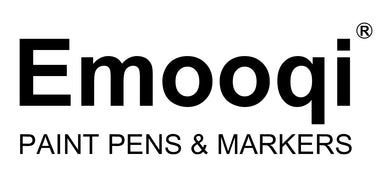
How to Paint Watercolors
Watercolors are painted with watercolor paints made by mixing basic materials and pigments that are soluble in water. Watercolors are clear and pure, almost glowing on paper. Watercolor paints are usually used to paint natural scenery, and are very suitable for medium-sized nibs with softer nibs and multi-layer coloring methods. Continue reading this tutorial to learn the various terms of watercolor painting, color mixing techniques, painting techniques, and ways to paint a variety of popular themes.

(The material all comes from the Internet)
1. Purchase paint. Watercolor paints come in tubes or blocks and come in shallow dishes. Opting for tube paint gives you more options when collecting paint, while block paint is usually a platter of pre-made colors. A visit to an art supply store will give you a basic set of paints that includes the following base colors: New Garcinia, Medium Yellow, Pyrrole Red, Everlasting Rose, Ultramarine Blue, Phthalocyanine Blue, Quinacridone Vivid Orange .
[1] Once you have learned to use these basic colors, you can experiment with other pigments.
Some watercolor paints are made of natural minerals, while others are a mixture of synthetic pigments and gum bases. This gum base makes it easier for the paint to apply layer by layer, and even when the paint dries, it is easy to mix after adding water.
[2]Watercolor paints are described according to their properties, some are transparent and others are opaque. Transparent paints allow you to see the white color of the paper, giving the paint a sheer sheen when painted on it, while opaque paints can also have a dramatic effect, but they tend to look dull more than transparent paints.
Watercolor paints are also divided into imprinted and non-imprinted. Pigments that do not leave imprints adhere to the surface of watercolor paper and are easily mixed with other pigments that do not leave imprints, while those that leave imprints will permanently penetrate into the interior of the paper and are more difficult to mix with other pigments.
[3]Some watercolor paints are precipitation, which means that they contain a thin layer of pigment that will settle into the crevices of the watercolor paper. This gives the paint a thick, sticky aesthetic, but is harder to mix with other paints.
The label on the paint will indicate whether the paint will volatilize, that is, whether the paint will fade or change color over time.
2.Buy other watercolor tools. In addition to paint, you will also need to purchase some other materials at the Art Supplies section. You may need to spend a fortune, but the materials will last for years. Here's what you need:
paintbrush. It's a good idea to have a set of different types of brushes so that you can use a variety of basic painting techniques with ease. Buy a size 5 round brush, a size 6 round brush, a size 8 round brush, a size 10 round brush, and a flat brush with a width of 2.5 cm all the way.
Palette. When choosing a palette, the depth of the palette should be able to hold at least 5ml of paint. You can buy palettes with multiple grids on them, or you can buy several smaller palettes, one for reds and purples, one for blues and greens, one for oranges and yellows, etc. Wait. Your palette should come with the palette when you buy it.
[4]drawing paper. Watercolor paper comes in three different materials: hot-pressed paper, which has a smooth surface; cold-pressed paper, which has a moderately smooth surface; and matte paper, which has a rougher surface. You can buy thicker 300lb paper or use thinner 140lb paper. For beginners, it is best to use thin and moderately smooth paper for practice, and thicker 300 lb paper for formal painting.
[5]Artboard and easel. Choose wooden, plexiglass, or foam boards that you can attach watercolor paper to. You may also need to buy an easel to support your drawing board while you paint.
Water container, paper towels, pencils, and erasers. These other tools can be helpful when you're drawing and within easy reach.
3.Ready for painting studio. Choose a place with plenty of natural light, and you may also need to prepare a desk lamp that is bright enough, especially when painting at night. Tape the watercolor paper to the drawing board and place it in the center of the table. If you're right-handed, put your palette, paintbrush, and water container to the right of the table, and other utensils, such as tissues, to the left. If you're left-handed, do it the other way around.
4.Learn watercolor terminology. If you've followed a tutorial to learn how to paint in watercolor, or have taken a watercolor class, you've been exposed to specific terms that describe your painting steps. So it's better to be familiar with these terms:
·Wash the pen. It means that you dip the pen in a container of water and gently press the tip of the pen against the bottom of the container to allow the bristles on the brush to stretch out and wash off the paint. Continue doing this until the pen is completely washed out.
·Dip with a brush. Run the brush in a paint bath (referring to the mixture of paint and water) so that the brush is fully dipped in paint. Lift the brush and run it lightly along the edge of the palette to remove excess liquid.
·Dip a paintbrush with paint. It's the same as dipping the paint all over the paint brush, the only difference is that this time, slide the paint-dipped paint brush along the edge of the palette a few times, so that the paint in the paint brush does not drip too much.
·Ink. Dab a paint-filled brush on the surface of a paper towel to remove excess paint. You can do it a little bit, or you can do it a bit harder.

